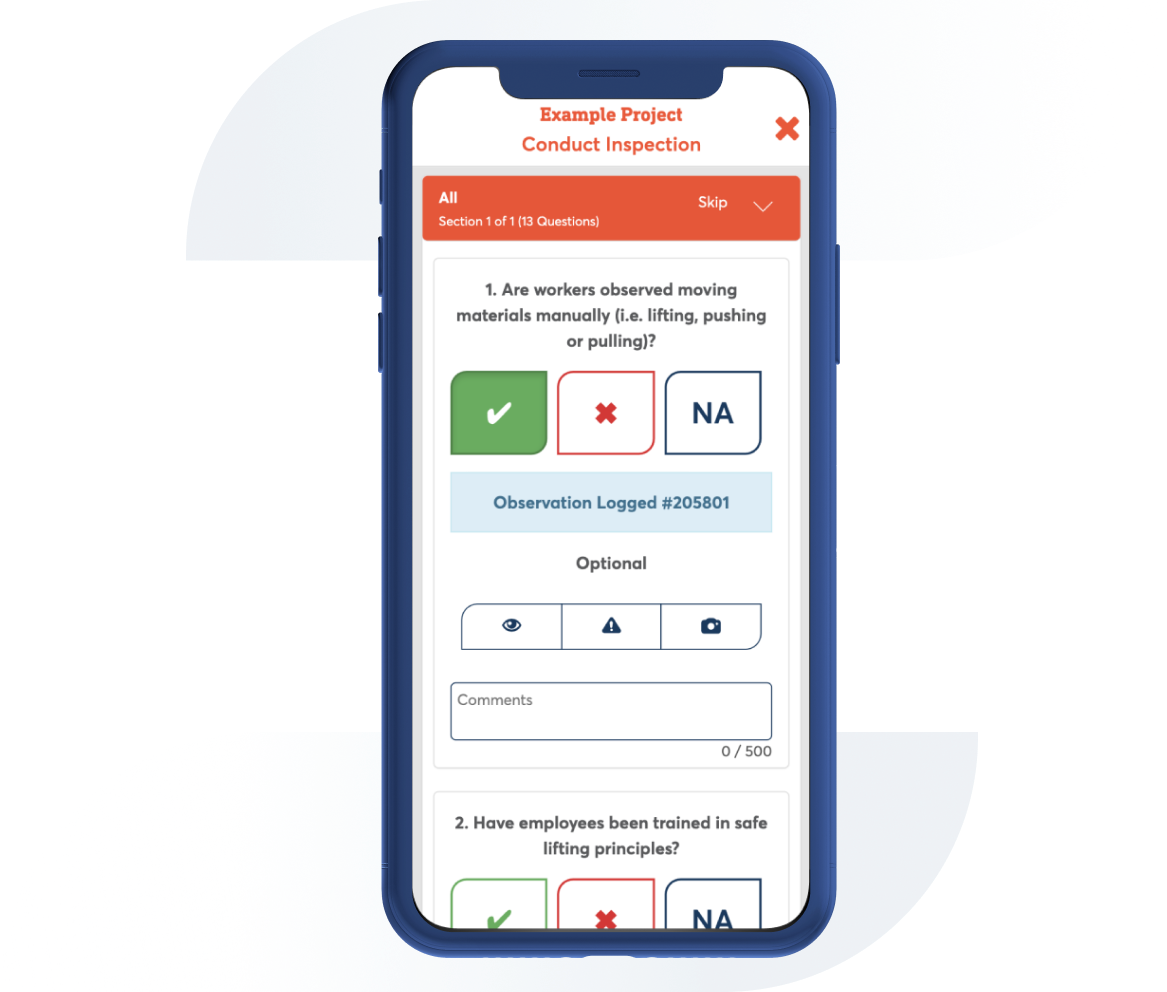OSHA Permit Required Confined Space Entry Checklist
Contributor: Safesite Jurisdiction: OSHA
When a permit is required for confined space work, use this OSHA-compliant checklist to ensure the area is properly ventilated and monitored and employees are supplied with PPE and emergency training.

Template Preview
1. Has air monitor been properly calibrated suitable to the anticipated atmospheric hazards available and functional for use?
Actions
2. Is the individual performing atmospheric testing trained, qualified and competent?
Actions
3. Has testing shown that safe levels of flammable gases and vapors, and potential toxic air contaminants are within acceptable levels, and oxygen level is at least 19.5 percent and not more than 23.5 percent?
Actions
1. Will the atmosphere in the space be monitored while work is being conducted?
Actions
2. Will the atmosphere in the space be monitored periodically while work is going on?
Actions
3. How often will it be tested?
1. If ventilation is needed has the space been flushed, ventilated, purged and rendered inert to eliminate or control atmospheric hazards prior to entry?
Actions
3. Is the air intake for the ventilation system located in an area that is free of combustible dusts and vapors and toxic substances?
Actions
4. If the atmosphere was found unacceptable and then ventilated, was it tested again before entry?
Actions
1. Has the personal protective equipment hazard analysis been conducted per 29 CFR 1910.132(a)?
Actions
2. Have the entrants been trained and certified in the use of personal protective equipment, including special clothing, per 29 CFR 1910.132(d)?
Actions
3. If special tools are required (i.e. spark-proof tools) are they safe to use in a confined space?
Actions
4. Has necessary lighting and communication equipment been provided?
Actions
5. If respiratory protection is required, is it OSHA/NIOSH approved and does the employer have a respiratory protection program? (i.e. air-purifying, supplied air, self-contained breathing apparatus, etc.)?
Actions
1. Have all personnel been properly trained (Authorized Entrants, Attendants , Supervisor, Rescuers (if applicable))?
Actions
1. Have all members of the confined space entry team been briefed on potential hazards, scope of work and emergency actions, and the signs and symptoms of exposure to oxygen deficient or toxic atmosphere, prior to the start of a permit required confined space entry?
Actions
2. Will the Confined Space Attendant have no other duties other than monitoring the access and communicating with the entrants inside the confined space?
Actions
3. If applicable, is it safe to remove the entrance cover/door before entry?
Actions
4. Has the opening been guarded by a railing, temporary cover, or other temporary barrier?
Actions
5. Has the entry supervisor reviewed, signed and posted the permit before entry begins?
Actions
6. Does the entrant have a safe method of entering and exiting the space.
Actions
1. Are rescuers trained (including CPR) and provided with SCBAs and equipment required to extract injured workers from a confined space properly?
Actions
2. Will there be an Entry Attendant on the outside in constant visual or auditory communication with the person on the inside?
Actions
4. Is the emergency rescue team able to reach the victim(s) in an appropriate time frame and is equipped for, and proficient in, performing the needed rescue services?
Actions
5. Do procedures include energy isolation steps (I.e. Lockout-Tagout) to control hazards, if applicable?
Actions
1. Does the permit contain all information required by OSHA (name of space, purpose of entry, date, names of entrants and attendants, means of testing, list of hazards in the space, results of testing, rescue info., PPE and communications procedures).
Actions
3. Write Comments or Remarks here:

Can't find what you are looking for?
